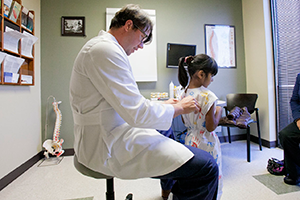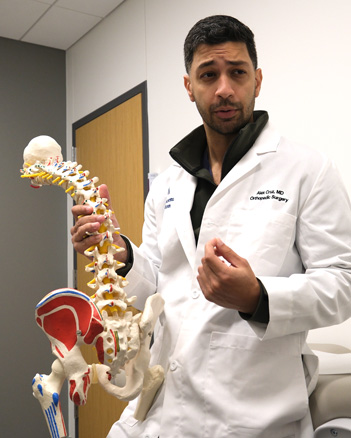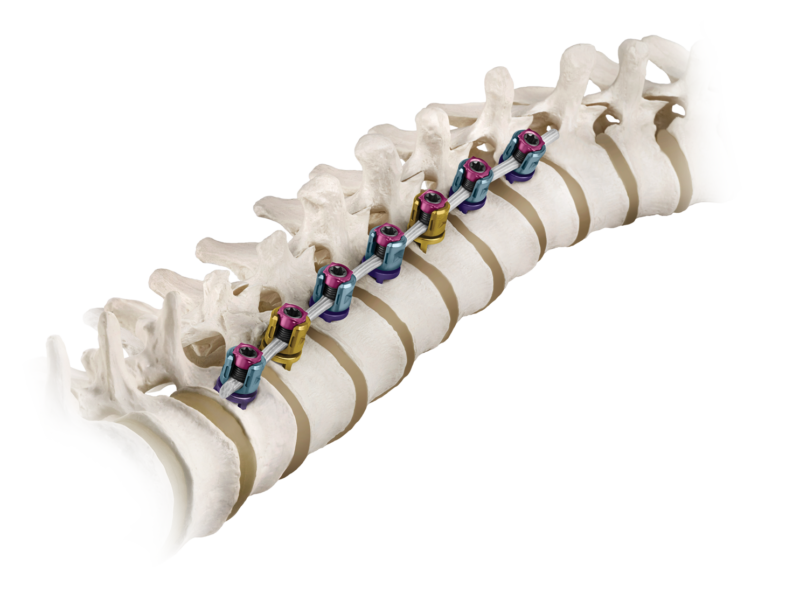
Learn more about the providers at Texas Spine and Scoliosis, the only spine specialized neurosurgery, orthopedic surgery, and non-surgical rehabilitation group in the central Texas area.
Interlaminar Lumbar Instrumented Fusion, ILIF, is typically used to treat back pain caused by spinal stenosis and spondylolisthesis.

During the ILIF procedure, the surgeon makes a small incision in the lower back and an opening is created through the ligaments. This allows access to the spinous processes (the bone you can feel when you run your hand down your spine). The damaged portion of the disc is removed and allograft bone is placed in the empty space. This helps protect the spinal cord and nerves. A metal implant is inserted to stabilize the spine and secure the spinous processes until the fusion takes place. Morsellated bone is used together with the allograft to fuse the vertebra above and below.
Advantages of using the ILIF procedure over traditional spine surgery can mean a smaller incision, less blood loss, less post-operative pain and quicker return to activity. This procedure is generally performed in an outpatient setting or 23 hour stay.
| Approach | Full Name | Access Route | Typical Levels Treated | Muscle Disruption | Advantages | Risks/Limitations |
|---|---|---|---|---|---|---|
| TLIF | Transforaminal Lumbar Interbody Fusion | Posterior (from the back, side of spinal canal) | L2 to S1 | Moderate | Good disc space access; unilateral approach reduces nerve retraction | Nerve root injury risk; limited disc space visualization |
| XLIF | Lateral Lumbar Interbody Fusion (eXtreme) | Lateral (through psoas muscle) | T12 to L5 (not L5-S1) | Minimal | Large graft placement; minimal blood loss | Risk to lumbar plexus; not suitable for L5-S1 |
| iLIF | Interlaminar Lumbar Interbody Fusion | Posterior (between spinous processes) | L2 to S1 | Minimal | Preserves stabilizing structures; reduced blood loss | Technically demanding; newer technique, limited long-term data |
| PLIF | Posterior Lumbar Interbody Fusion | Posterior (midline) | L2 to S1 | High | Direct access to disc; bilateral cage placement possible | More muscle disruption; higher blood loss |
| ALIF | Anterior Lumbar Interbody Fusion | Anterior (through abdomen) | L4 to S1 | Minimal (no back muscle disruption) | Wide disc access; large implant size possible | Major vessel injury risk; requires vascular access surgeon |
Texas Spine and Scoliosis is a regional referral center for the treatment of back and neck pain and scoliosis

Learn more about the providers at Texas Spine and Scoliosis, the only spine specialized neurosurgery, orthopedic surgery, and non-surgical rehabilitation group in the central Texas area.
 Texas Spine & Scoliosis approved for the new BRAIVE scoliosis tethering study
Texas Spine & Scoliosis approved for the new BRAIVE scoliosis tethering study

Read about various patient success stories that have been performed by the physicians at Ascension Texas Spine & Scoliosis